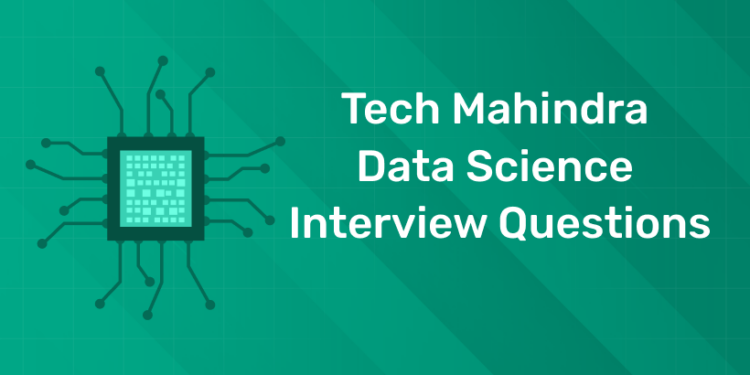Table of Contents
Tech Mahindra is a Multinational company, having its presence in over 90 countries around the globe. It is known for its customer-centric approach. Tech Mahindra’s key areas include AI, IoT, Blockchain and Data Science technology. Getting a job in this prestigious company is a dream come true for many candidates who wish to build a career in the digital field. In this article we will be covering some Tech Mahindra Data Science Interview Questions.
Why Join Tech Mahindra as a Data Scientist?
Tech Mahindra provides an exciting environment for data scientists to work on diverse, cutting-edge projects, grow their careers, and make a global impact.
- Exciting Projects:
- Work on innovative digital projects in diverse industries like telecommunications and healthcare.
- Apply advanced analytics and machine learning to tackle real-world challenges.
- Career Growth:
- Access opportunities for continuous learning and professional development.
- Collaborate with global teams in a supportive and dynamic environment.
- Cutting-Edge Technology:
- Utilize AI, IoT, and blockchain technologies to drive impactful solutions.
- Stay at the forefront of technology trends and innovations in data science.
- Global Impact:
- Contribute to solutions that shape the future of global industries.
- Make a meaningful impact through data-driven insights and strategies.
Tech Mahindra Data Science Interview Preparation Tips:
1. Understand Tech Mahindra’s Focus:
- Research recent projects and industries served by Tech Mahindra.
- Align your skills with their technological initiatives.
2. Review Data Science Fundamentals:
- Refresh knowledge of machine learning algorithms and statistical analysis.
- Practice data manipulation using Python or R.
3. Practice Coding:
- Master Python or R programming for data analysis.
- Practice solving data science problems using libraries like NumPy and Pandas.
4. Know Your Algorithms:
- Understand key algorithms like linear regression and decision trees.
- Be prepared to discuss their applications in data science.
5. Prepare for Case Studies:
- Have examples ready from past projects or scenarios.
- Demonstrate problem-solving skills and data analysis approaches.
6. Be Familiar with Big Data Technologies:
- Learn about tools like Hadoop and Spark for big data processing.
- Understand cloud platforms such as AWS or Azure for data science applications.
7. Communicate Clearly:
- Practice explaining technical concepts concisely.
- Be ready to articulate how your skills meet Tech Mahindra’s needs.
8. Stay Updated:
- Keep informed about the latest trends in data science and technology.
- Follow industry news and advancements in machine learning and AI.
Top Tech Mahindra Data Science Interview Questions and Answers
1: Which of the following algorithms is most suitable for classification tasks?
1. How to deploy a model on the cloud?
Ans. Deploying a model on the cloud typically involves:
-
- Selecting a cloud provider (e.g., AWS, Azure, GCP).
- Packaging the model with its dependencies.
- Creating a Docker container if needed.
- Using cloud services (e.g., AWS SageMaker, Azure ML) to deploy and manage the model.
2. Azure vs. AWS:
Ans.
-
- Azure: Strong integration with Microsoft products, better for enterprises already using Microsoft services, offers a wide range of AI and machine learning tools.
- AWS: Market leader with a vast array of services, strong ecosystem for machine learning (e.g., SageMaker), extensive global infrastructure.
3. Dockerfile vs. Docker Compose YAML:
Ans.
-
- Dockerfile: A script containing a series of instructions on how to build a Docker image.
- Docker Compose YAML: A configuration file for defining and running multi-container Docker applications, managing multiple Docker containers.
4. Pipeline from code development to model deployment:
Ans.
-
- Code Development: Write and test your code locally.
- Version Control: Use Git to manage code versions.
- Continuous Integration: Use CI tools (e.g., Jenkins) to run tests.
- Containerization: Package the application using Docker.
- Deployment: Deploy the container to the cloud using services like Kubernetes or cloud-specific offerings.
5. What is Jenkins pipeline?
Ans. Jenkins Pipeline: An automated process for building, testing, and deploying code, defined as code using the Groovy-based DSL.
6. How do you use Jenkins to automate CI/CD?
Ans. By setting up Jenkins pipelines to automate the build, test, and deployment processes, integrating with version control, and configuring various stages of the pipeline.
7. When will a model be redeployed?
Ans. A model will be redeployed when:
-
- The model is retrained with new data.
- Improvements or updates are made to the model.
- There are changes in the production environment or dependencies.
- Performance issues or bugs are detected in the current deployment.
8. How does AWS handle multiple models deployed in production simultaneously?
Ans. AWS handles multiple models in production using services like:
-
- AWS SageMaker Endpoints: Create multiple endpoints for different models.
- Load Balancing: Use Elastic Load Balancing to distribute traffic among multiple models.
- Container Orchestration: Use ECS or EKS to manage multiple model containers efficiently.
- Monitoring and Scaling: Use CloudWatch for monitoring and auto-scaling groups for automatic scaling based on demand.
Ready to take your data science skills to the next level? Sign up for a free demo today!
SQL Basic Queries
9. How do you write a query to select all columns from a table named employees?
Ans. SELECT * FROM employees;
10. How do you filter records in the employees table where the salary is greater than 50000?
Ans. SELECT * FROM employees WHERE salary > 50000;
11. How do you find the average salary of employees grouped by department?
Ans. SQL Code
FROM employees
GROUP BY department;
12. How do you join two tables, employees and departments, on the department_id column?
Ans. SQL code
SELECT e.*, d.department_name
FROM employees e
JOIN departments d ON e.department_id = d.department_id;
Unnecessary Definition from SQL
13. What is an unnecessary definition in SQL?
Ans. An unnecessary definition in SQL refers to defining redundant or non-essential elements in a query, such as selecting columns that are not used, using subqueries when a JOIN is sufficient, or including complex expressions that do not enhance the query’s functionality or performance.
Linear and Logistic Regression
14. What is Linear Regression?
Ans. Linear Regression is a supervised learning algorithm used for predicting a continuous dependent variable based on one or more independent variables by fitting a linear relationship between them.
15. What is Logistic Regression?
Ans. Logistic Regression is a supervised learning algorithm used for binary classification tasks. It predicts the probability of a binary outcome using a logistic function to model the relationship between the dependent variable and one or more independent variables.
Decision Tree and Random Forest
16. What is a Decision Tree?
Ans. A Decision Tree is a supervised learning algorithm used for both classification and regression tasks. It splits the data into subsets based on the value of input features, creating a tree-like model of decisions.
17. What is a Random Forest?
Ans. A Random Forest is an ensemble learning method that combines multiple decision trees to improve the model’s accuracy and prevent overfitting. It creates a ‘forest’ of random decision trees and aggregates their predictions.
Naive Bayes Theory
18. What is Naive Bayes Theory?
Ans. Naive Bayes is a probabilistic classification algorithm based on Bayes’ Theorem. It assumes independence between the features and calculates the probability of each class based on the input features, selecting the class with the highest probability.
How to Handle Null Values in a Dataset
19. How do you handle null values in a dataset?
Ans. Handling null values can be done in several ways:
- Removal: Remove rows or columns with null values.
- Imputation: Fill null values with a specific value like the mean, median, mode, or a fixed value.
- Prediction: Use predictive models to estimate and replace null values.
- Flagging: Create a separate binary feature indicating the presence of null values.
20. What are your favorite libraries in Python?
Ans. One of my favorite libraries in Python is Pandas. It’s great for data manipulation and analysis. With Pandas, you can easily read data from different file formats, clean it, and perform various operations to get insights quickly. Another favorite is NumPy, which is essential for numerical computations and handling arrays efficiently. Lastly, I really like Matplotlib for creating visualizations; it makes it easy to generate plots and charts to understand data better. For example, I often use Pandas to clean my datasets, NumPy to perform calculations, and Matplotlib to visualize the results.
22. What is the difference between Logistic and Linear Regression?
Ans.
Linear Regression:
- Purpose: Predicts a continuous outcome based on input variables.
- Output: Gives a straight-line prediction (like predicting house prices).
- Equation: Uses a simple linear equation to find a relationship between variables.
- Use: Best for tasks where the result is a number.
Logistic Regression:
- Purpose: Predicts the probability of a categorical outcome.
- Output: Provides probabilities that map to binary outcomes (like yes/no or spam/not spam).
- Equation: Uses a logistic function to model the probability.
- Use: Ideal for tasks where the result is a category.
Key Differences:
- Output Type: Linear regression predicts numbers; logistic regression predicts probabilities.
- Application: Linear regression for numbers, logistic regression for categories.
In essence, linear regression predicts numbers (like house prices), while logistic regression predicts probabilities and maps them to categories (like yes/no).
🚀 Start Coding Today! Enroll Now with Easy EMI Options. 💳✨
Equip yourself with in-demand skills to land top-tier roles in the data-driven world.
Start Learning Now with EMI OptionsFrequently Asked Questions
What programming languages are essential for a Data Scientist at Tech Mahindra?
It is important to know Python and R for a Data Scientist at Tech Mahindra.
How does Tech Mahindra use AI and machine learning in its projects?
AI and ML are used to drive digital transformation across sectors like telecommunications and healthcare, improving decision-making and operational efficiency.
Can you explain the importance of data preprocessing in data science projects at Tech Mahindra?
Data preprocessing ensures data accuracy and reliability by cleaning, transforming, and preparing data for analysis and modeling.
What are some typical challenges you might face as a Data Scientist at Tech Mahindra?
Challenges include managing big data volumes, ensuring model accuracy and scalability, and integrating diverse data sources effectively.
How does Tech Mahindra promote continuous learning and career development for Data Scientists?
Tech Mahindra offers training, certifications, and opportunities for conference participation to keep data scientists updated with the latest industry tools and techniques.












